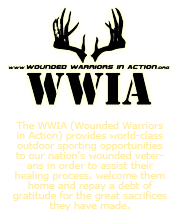December 11, 2023 Hayward Lakes Area Outdoor Report
December 11, 2023
Hayward Lakes Area Outdoor Report
Steve Suman
The current forecast says this week starts with “cool” highs in the mid-20s, warming to the low 40s toward the end of the week. There are a few chances of precipitation Tuesday and Friday, but otherwise mostly sunny and windy. For comparison, the long-term average is 28°/5° for December.
“The current weather in the Quiet Lakes’ area is great for people who do not prefer winter,” says Greg at Happy Hooker, “but it is not conducive to ice making or winter sports! Most of the snow is gone and we lost some ice, and this week’s weather is all over the place, with high temperatures ranging from 28 to 46 degrees.
“A few anglers have ventured out on the lakes and there are some ‘safe’ spots to fish, however most lakes have thin ice or open water again.
“Anglers need to be very cautious if they venture on the ice. NO ice is safe ice, and after this warm-up and the current forecast, it will be sketchy at best, so be sure to check and double-check ice as you go. Let people know when and where you are going, when to expect your return, and be mindful of changing conditions throughout the day.”
Jarrett at Hayward Bait says that although area lakes have had ice for at least a week or two, different lakes make ice at a different pace, depending on depth, wind, and other factors.
“Do not assume ice progress on one lake is the same for all lakes. One angler’s five inches of ice is another angler’s two inches of ice, so when approaching a new waterbody, assume you know nothing about it until you check it yourself. Make sure to take a spud bar, float suit, and stay safe out there!
“Walleyes are in deeper water during the day, move shallow during evening feeding hours, and stick around until just after the sunrise. Fishing for walleyes in shallow water requires silence, as fish become spooky and shoot off at any small noise such as footsteps, aerators, spud bars, etc. Set up early on weed edges and alleyways the fish use to travel, and then get far away. Walleye suckers, small shiners, or fresh crappie or bluegill fry should put a walleye on ice.
“Northern pike are shallow, out to 10 feet or so. Use live bait on tip-ups set along weed edges in shallow bays and backwaters during daylight hours. Look for the food chain to find pike.
“Crappies move shallow and park on weed edges until major ice forms. Crappie minnows on tips-ups, tip downs, and dead sticks are all effective during early ice periods when fish are spooky. Again, the situation calls for stealth.
“Bluegills move to shallow weed growth before moving to main lake structure such as rocks, cribs, wood, etc. Waxies on small jigs work all winter, but try some 1/64- or 1/32-ounce spoons to get the attention of bigger fish in the schools. Bigger baits select bigger fish and cut down on the dinks stealing your bait.”
This week, DNR fisheries biologist Max Wolter discusses the history of the Little Weirgor River.
“The Hayward DNR Fish Team is doing a great amount of work on trout habitat in the Little Weirgor River and its surrounding tributaries. A 1961 report shed a lot of light on the history of that system and on previous efforts to improve trout habitat.
“In 1950, an effort began to restore trout habitat in the stretch of the Little Weirgor upstream from Exeland. This area has tremendous coldwater potential because of excellent groundwater and spring inputs. However, in the early 50s, some deemed the area ‘unsuitable for trout.’ A wildfire dramatically changed the tree cover along the banks of the river and contributed to at least some of the habitat issues in the area.
“Stocking was the first effort made to restore the trout population, but it became clear that stocking alone was not enough. The development of a more comprehensive restoration plan included protection of the land around the river and declaring important nursery areas upstream as a fish refuge.
“Next, a massive tree planting effort saw the planting of more than 150,000 trees and shrubs, followed by the installation of in-stream habitat structures including wing dams, deflectors, and bank covers. A few of these structures remain visible in the river about 70 years later. The removal of beaver dams was an action still important to this day.
“Biologists had many great things to say following the mid-20th century restoration work, such as ‘All three of the headwater branches now have good trout populations; ‘Nothing but brook trout can be found in the Buckhorn Branch and the trout reproduce in profusion.’; ‘The Little Weirgor attracts trout fishermen from a large part of northern Wisconsin.’
“It is encouraging to be able to say that those same statements still hold true in 2023, and that the Little Weirgor River system is still very worthy of a trip, no matter where you live in Wisconsin!”
The Sawyer County deer harvest total for this season, as of December 5, is 2,046 deer, including 1,358 antlered and 688 antlerless. Totals for the various seasons include:
- Nine-day gun: 1,369 (934 antlered, 435 antlerless)
- Archery: 182 deer (117 antlered, 65 antlerless)
- Crossbow: 431 deer (284 antlered, 147 antlerless)
- Youth Deer Hunt (Oct. 7-8): 31 deer (12 antlered, 19 antlerless)
- Muzzleloader: 33 deer (11 antlered, 22 antlerless)
- Four-day antlerless hunt Dec. 7-10: No harvest report is available at this time.
Deer hunting continues with an antlerless-only holiday hunt Dec. 24-Jan. 1 (see map for areas); archery and crossbow seasons running through Jan. 7; and an extended archery season open Jan. 8-31 in select areas (see map for areas).
The DNR’s Deer Donation Program provides ground venison to food pantries throughout the state and Wisconsin hunters supply the venison that stocks these shelves. Since the program began in 2000, hunters have donated 98,000 deer, totaling more than 3.9 million pounds of venison. The program runs through the end of deer hunting seasons. If you would like to help this holiday season, visit the Deer Donation Program webpage to learn how you can contribute.
The DNR requires a vehicle admission sticker on all motor vehicles stopping in state parks, state forests, and state recreation areas. The 2024 annual passes are valid at properties from date of purchase through Dec. 31, 2024.
People with additional vehicles registered to the same address can purchase reduced-rate stickers online and can purchase one reduced-rate sticker at the same time when purchasing a full-price sticker. Additional reduced-rate vehicle stickers are available at parks.
The 2024 Wisconsin State Trail Passes are also available. The DNR requires a state trail pass on certain trails that allow biking, horseback riding, cross-country skiing, and in-line skating. These trails are in state parks, forests, and recreation areas, and on stand-alone state trails. Trails requiring a state trail pass have signs posted at the trailheads. The state issues the trail pass to the person and the pass is non-transferable.
Trail passes are not available online at this time, but are available from designated trail pass vendors, in person at DNR service centers, and individual properties via drive-up window service. Annual trail pass purchases are available through self-registration kiosks at trailheads, with the passes then mailed.
FISHING REPORT
Anglers are hitting the early ice in good numbers, but fluctuating temperatures are affecting ice thickness daily and safety is the top priority. Ice thickness can change overnight, as anglers are discovering, because they check as they go. Each day can bring different conditions, so approach every trip on the ice as if it is the first one. Take the safety equipment with you ‑ it does no good if it is “back at the truck.” Someone (preferably someone who actually cares about your well-being!) should know when and where you are going and when to expect your return.
Reports on ice thickness vary from lake to lake and day to day, and range from 2-5 inches, more or less, at last report. Individual anglers are responsible for verifying that the ice where they choose to fish is safe and sufficient.
The DNR encourages ice anglers to practice ice safety on all waterbodies this winter and to remember that no ice is ‘safe’ ice. Temperature swings, strong winds, currents, and underground springs feeding lakes and rivers vary widely, even across a lake or river. These factors and more are why no one should ever consider any ice safe, especially not early in the season. Contact local bait shops and fishing clubs for ice conditions. The DNR does not monitor ice conditions.
Walleye:
Walleyes hold in deeper water adjacent to shallow weeds during the day, but move to those shallow weeds to feed during evening hours into dark. Shallow fish can vacate an area at the slightest noise, so the less commotion you cause the better your success chances. Walleye suckers, shiners, and fatheads are all productive.
Northern Pike:
Northern pike fishing is good during the day in backwaters and bays near shallow weeds and weed edges out to 12 feet. Find baitfish and panfish concentrations and pike are nearby. Live bait ‑ northern suckers, walleye suckers, and shiners ‑ on tip-ups and dead sticks work best.
Crappie:
Crappie fishing is good on shallow weed edges, but fish are skittish and quiet is the key. Crappie minnows on tip-ups, tip-downs, and dead sticks work well, and plastics, Gulp! baits, and small spoons are all producing action.
Bluegill:
Bluegill fishing is good for anglers fishing in/around shallow weeds, brush, and other cover. Use waxies, spikes, plastics, and Gulp! baits on small jigs, teardrops, and plain hooks. Small spoons and small minnows will target the larger bluegills and help deter small bait bandits.
Nov. 30: Walleye season closed on the Chippewa Flowage.
Dec. 14-22: Elk season reopens in Clam Lake Elk Management Zone.
Dec. 16: Goose season closes in Northern Zone.
Dec. 21: Winter Solstice - first day of winter (day with the fewest hours of sunlight ‑ but days begin to grow longer!)
Dec. 24-Jan. 1: Antlerless-only holiday hunt in select Farmland (Zone 2) counties.
Dec. 25: Christmas Day.
Dec. 25: Bobcat hunting and trapping season Period 1 closes.
Dec. 26: Bobcat hunting and trapping season Period 2 opens.
Dec. 26: Full Cold Moon.
Dec. 31: Musky season closes.
Jan. 1: New Year’s Day 2024.
Jan. 6: Early catch-and-release trout season opens (see regs).
Jan. 6: Pat’s Landing 12th Annual Tipper Tourney; 8 a.m.-4-p.m.; $20/person (715-945-2511).
Jan. 7: Archery and crossbow deer season closes.
Jan. 7: Seasons close: Ruffed grouse in Zone A; Pheasant; Hungarian partridge; Fisher trapping; Turkey (Zones 1-5).
Jan. 8-31: Extended archery season in metro sub-units and counties.
Jan. 20-21: Free Fishing Weekend.
Jan. 31: Bobcat hunting and trapping season Period 2 closes.
For more information on area events and activities, visit the Hayward Lakes Visitor and Convention Bureau and Hayward Area Chamber of Commerce websites, view the Calendar of Events, or call (715) 634-8662 or 800-724-2992.











